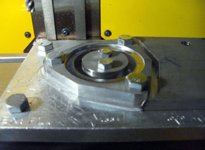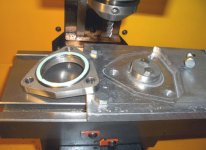Madis Reivik
Hot Rolled
- Joined
- Jan 23, 2011
- Location
- Estonia
Hello !
I have a problem.
10mm rougher bit, depth 1/2D (5mm) running at 1900rpm, feed 200mm/min (8 ipm). Material 304 stainless steel, quite a small detail (about 3x2 inches).
Problem: when changing direction, endmill "screams". And after some work (maybe after 2 feet of cutting) it breaks.
I'm using manufacturer specified speed for slotting, so this should not be the problem. Also, I do not have vibration - I do not hear it and the endmill corners are good, i think that corners are first to go when there is vibration.
Is the problem in sharp corners ? I'm using GibbsCAM to generate the paths and it will generate 90 degree sharp corners.
I have Fanuc Robodrill T14.
Thanks for paying attention !
I have a problem.
10mm rougher bit, depth 1/2D (5mm) running at 1900rpm, feed 200mm/min (8 ipm). Material 304 stainless steel, quite a small detail (about 3x2 inches).
Problem: when changing direction, endmill "screams". And after some work (maybe after 2 feet of cutting) it breaks.
I'm using manufacturer specified speed for slotting, so this should not be the problem. Also, I do not have vibration - I do not hear it and the endmill corners are good, i think that corners are first to go when there is vibration.
Is the problem in sharp corners ? I'm using GibbsCAM to generate the paths and it will generate 90 degree sharp corners.
I have Fanuc Robodrill T14.
Thanks for paying attention !







